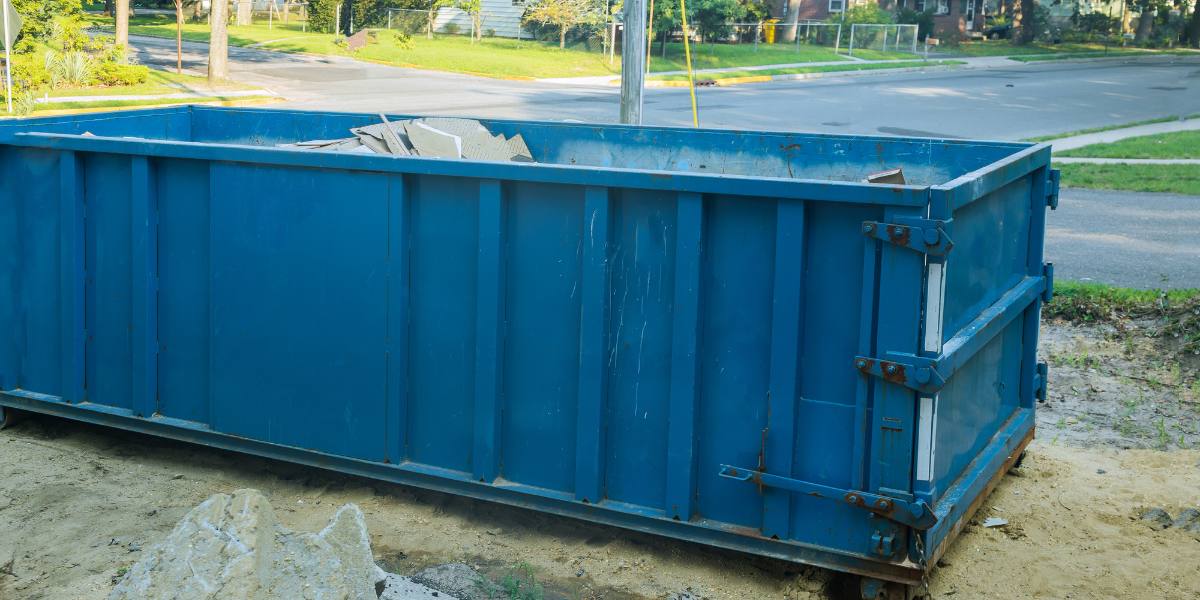Efficiently organizing waste in a dumpster rental can save you time, money, and stress while keeping your project running smoothly.
The key to maximizing space lies in planning ahead, sorting waste, and making smart decisions about what you throw in.
Dumpster rental companies have specific guidelines regarding acceptable materials, so adhering to these rules not only prevents fines but also promotes safety for both workers and the surrounding area.
Maximizing the space in your dumpster rental is essential for both cost savings and environmental sustainability, whether you’re handling a home renovation, a construction project, or a major clean-up.
In this guide What are the Best Ways to Maximize Space in a Dumpster Rental?, we’ll explore top tips to help you maximize your dumpster space and optimize waste management.
Why Space Optimization Matters
When you rent a dumpster, you typically pay based on its size, weight capacity, and rental duration. Properly utilizing the space allows you to get the most out of your investment. For more details on choosing the right size, visit our guide on dumpster rental sizes.
Overfilling the dumpster can lead to additional costs due to overweight charges or unsafe hauling conditions. Furthermore, being mindful of what you’re tossing out helps reduce the environmental footprint by increasing the likelihood of recycling or repurposing usable items.
In the following sections, we’ll share detailed strategies to help you maximize the available space in your dumpster rental.
Sort Waste Beforehand
Waste sorting is the cornerstone of efficient dumpster use. By categorizing your waste into groups like recyclables, reusable items, and trash, you’ll significantly reduce the volume of what you put into the dumpster. If you have appliances to dispose of, consider our appliance removal and recycling services.
Sorting also ensures that you avoid tossing prohibited items that can lead to fines or additional charges.
Steps to Sort Waste:
Recyclables: Separate materials like glass bottles, plastic containers, paper, cardboard, and metal items that can be sent to a recycling facility.
Hazardous Waste: Set aside items such as batteries, paints, chemicals, and other hazardous materials that often require special disposal.
Donations: Consider donating furniture, electronics, and clothing that are still in usable condition to local charities or thrift stores.
General Waste: Items that don’t fit into any of the above categories should go into the general waste pile, making sure they comply with the rental company’s guidelines.
Why It Helps: Sorting your waste reduces the volume that ends up in the dumpster, leaving more room for what truly needs to be discarded.
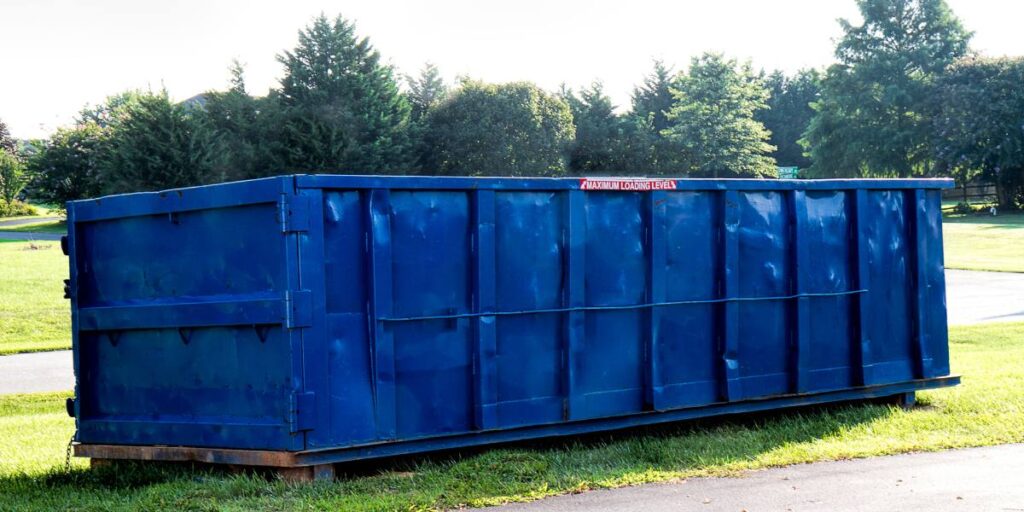
Consult with Your Dumpster Rental Provider
Your dumpster rental provider is a valuable partner in helping you maximize space.
Many rental companies have strict rules on what you can and cannot dispose of in their containers, and exceeding these limits can lead to fees or even legal issues.
Key Questions to Ask:
What are the weight and volume limits? Exceeding these can result in extra charges or the need for a second dumpster.
Are there restrictions on certain types of waste? Items like tires, mattresses, or certain appliances might be prohibited.
Can I upgrade or exchange the dumpster if needed? Some companies offer flexible rental plans that allow you to adjust the size based on your needs.
Why It Helps:
Open communication ensures you avoid overage charges, penalties, and inefficient space use by choosing the right size dumpster from the start. If you’re unsure about what items are allowed, check our what can you throw in a dumpster page for guidance.

Disassemble Large Items
Bulky items such as sofas, bed frames, and large appliances take up excessive space when left intact. By disassembling them into smaller parts, you can fit more items in the dumpster. For large construction items, see our construction debris removal services.
This is especially helpful for items that don’t have a flat shape and might otherwise leave large gaps.
How to Disassemble Efficiently:
Furniture: Remove legs from tables and chairs, separate cushions from sofas, and dismantle bed frames.
Appliances: For items like refrigerators or washing machines, remove doors and drawers where possible, or take off bulky external components.
Construction Debris: Break down drywall, cut wood into smaller pieces, and separate large metal beams to reduce their footprint in the dumpster.
Why It Helps: Disassembling items allows you to stack them more compactly, leaving fewer air pockets and maximizing dumpster capacity.

Load Heavy and Flat Items First
Starting with heavy and flat items creates a solid base, making it easier to load the dumpster in an organized way.
This method also prevents lighter, more fragile items from being crushed under the weight of bulkier debris.
Examples of Ideal Base Materials:
Flat Items: Doors, plywood, or other large flat surfaces can be laid flat at the bottom.
Heavy Debris: Start with items like bricks, tiles, or large metal parts. This gives you a firm foundation and helps prevent shifting when the dumpster is transported.
Why It Helps: A stable foundation helps distribute weight evenly across the dumpster, maximizing the use of available space while keeping your load safe and secure during transport.
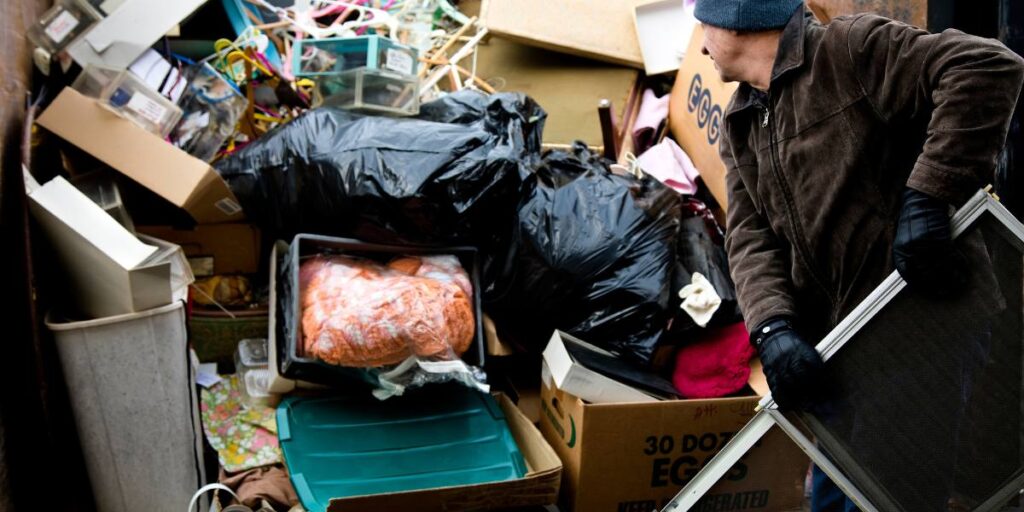
Fill Gaps and Distribute Weight Evenly
Maximizing space is not just about what you throw in but how you organize it.
As you load larger items, look for gaps and spaces between them where smaller debris can fit. This method ensures that no area goes unused.
How to Do It:
Small Items: Place smaller pieces of trash, like bags of household waste, loose materials, or scrap wood, in the spaces between larger items.
Distribute Weight: Be mindful of the overall weight distribution. For example, avoid placing all heavy items on one side of the dumpster to prevent shifting during transport.
Why It Helps: Proper weight distribution keeps your load safe during transportation and ensures maximum use of every available inch.
Use a Systematic Loading Approach
An organized and systematic loading process prevents wasted space. Instead of throwing items haphazardly into the dumpster, start loading from one end and move consistently toward the other.
The Best Approach: Back-to-Front: Start at the back of the dumpster and work your way forward. This prevents stacking materials in a way that blocks access to other items.
Top-to-Bottom: Pack in layers, starting with heavy items at the bottom and building up with lighter ones. This ensures you can fill the dumpster efficiently without needing to rearrange later.
Why It Helps: A methodical loading approach avoids unused spaces and keeps the contents of the dumpster stable.
Consider Recycling and Donating
One of the most effective ways to maximize space is by reducing the amount of waste that goes into the dumpster in the first place. Recycling and donating items that are still usable not only reduces your environmental impact but also frees up valuable dumpster space.
What to Recycle or Donate:
Recycle: Metals, plastics, electronics, and some construction materials.
Donate: Furniture, clothing, and working appliances can often be donated to charitable organizations.
Why It Helps: Less waste means less to dispose of, and fewer items in the dumpster, saving space for debris that truly needs to be discarded.
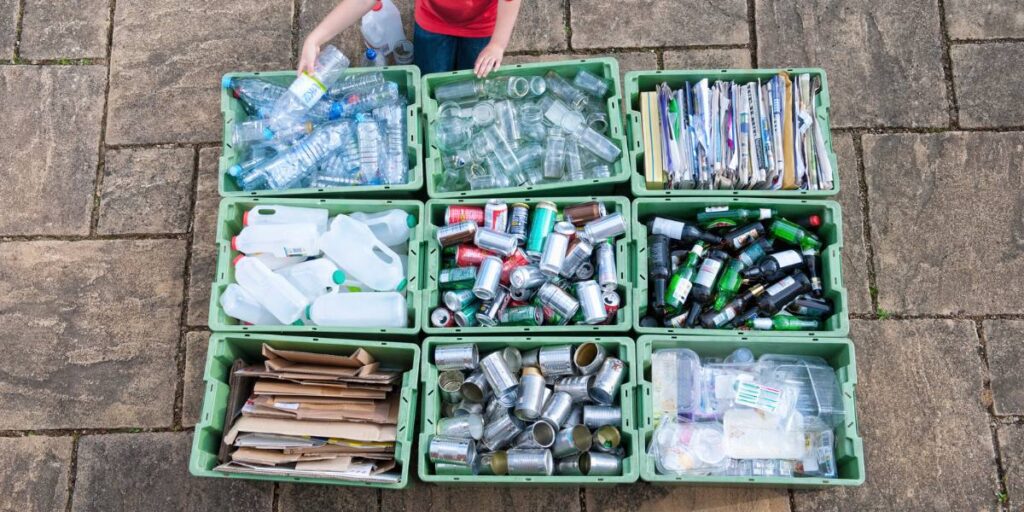
Regularly Check Dumpster Capacity
It’s crucial to keep an eye on how full your dumpster is as you load it. Exceeding weight limits can result in additional fees, while overfilling the dumpster may make it unsafe for transport.
Monitoring Techniques:
Visually Inspect: Check regularly to ensure the dumpster is being loaded evenly and not overfilled.
Weight Considerations: Know the weight limit of your dumpster rental and be mindful of heavy items like concrete or metal that can add up quickly.
Why It Helps: Avoiding overloading ensures that you won’t face surprise charges or create a hazardous load during transport.
By following these tips, you can make the most of your dumpster rental, effectively manage your waste, and ensure compliance with local regulations.
With strategic planning, you’ll maximize the available space, reduce your disposal costs, and contribute to more sustainable waste management practices.
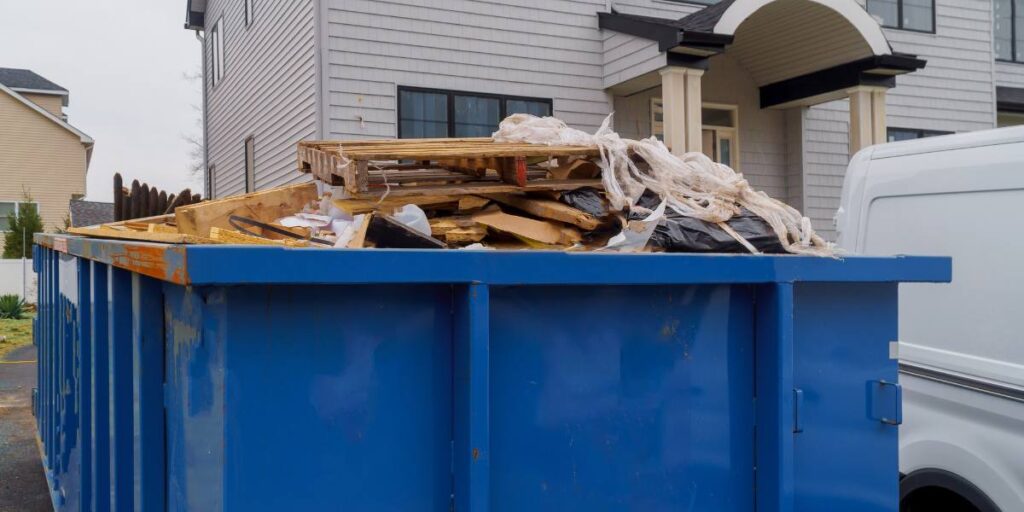
FAQs
What can I toss in my dumpster rental?
Great question! You can typically load up your dumpster with household waste, construction debris, yard waste, and those bulky items that take up too much space.
Just keep in mind that hazardous materials—think chemicals, batteries, and certain electronics—along with appliances that contain refrigerants and tires are usually off-limits.
It’s always a good idea to check with your rental provider for their specific guidelines to avoid any surprises.
How do I figure out what size dumpster I need?
The size you need really depends on how much waste you plan to generate. Most rental companies offer a range of sizes from 10 to 40 cubic yards, so you have options!
Take a moment to assess your project’s scope, and don’t hesitate to reach out to your provider for tailored recommendations.
What happens if I go over my dumpster’s weight limit?
Going over the weight limit can lead to extra fees and might make transporting the dumpster unsafe.
To keep everything running smoothly, regularly check how much you’re loading in and reach out to your rental provider if you think you’re getting close to the limit.
Can I hang on to the dumpster longer than my rental period?
Most rental companies are flexible when it comes to extensions!
Just make sure to give them a heads-up in advance. Keep in mind that additional fees might apply for extended rentals, so double-check your agreement for details.
How should I prepare for the delivery of my dumpster?
Preparation is key! Clear the delivery area of any obstacles like vehicles, debris, or low-hanging branches to make things easy for the delivery team.
It’s also helpful to provide specific instructions on where you’d like the dumpster placed for quick and convenient access.
Conclusion
Maximizing space in your dumpster rental isn’t just about stuffing it to the brim; it’s about doing it smartly and responsibly.
By sorting your waste, consulting with your rental provider, disassembling larger items, and employing strategic loading techniques, you can effectively utilize every last inch of space.
Keep an eye on weight limits and explore recycling and donation options to boost your waste management efforts even further.
With a little careful planning and execution, you’ll discover that managing your waste can be a breeze and even budget-friendly!
Follow these tips to enhance your dumpster rental experience while contributing to a cleaner, more sustainable environment. For reliable dumpster rental services, click here to book with us anytime.
